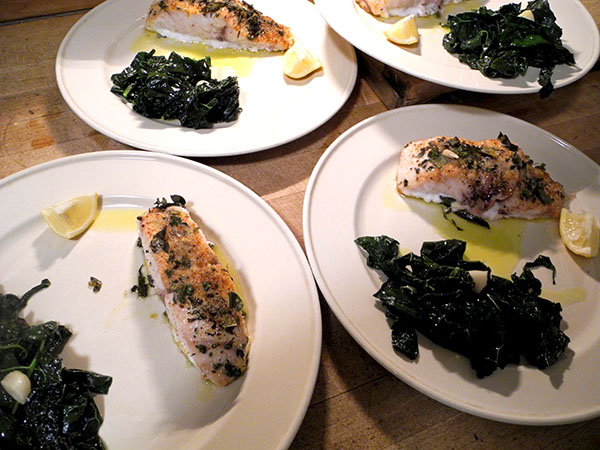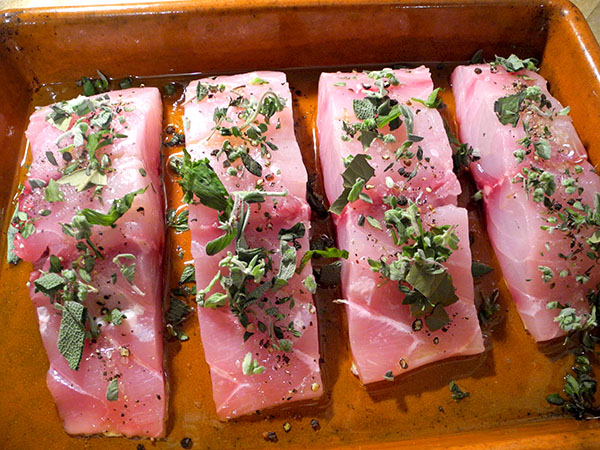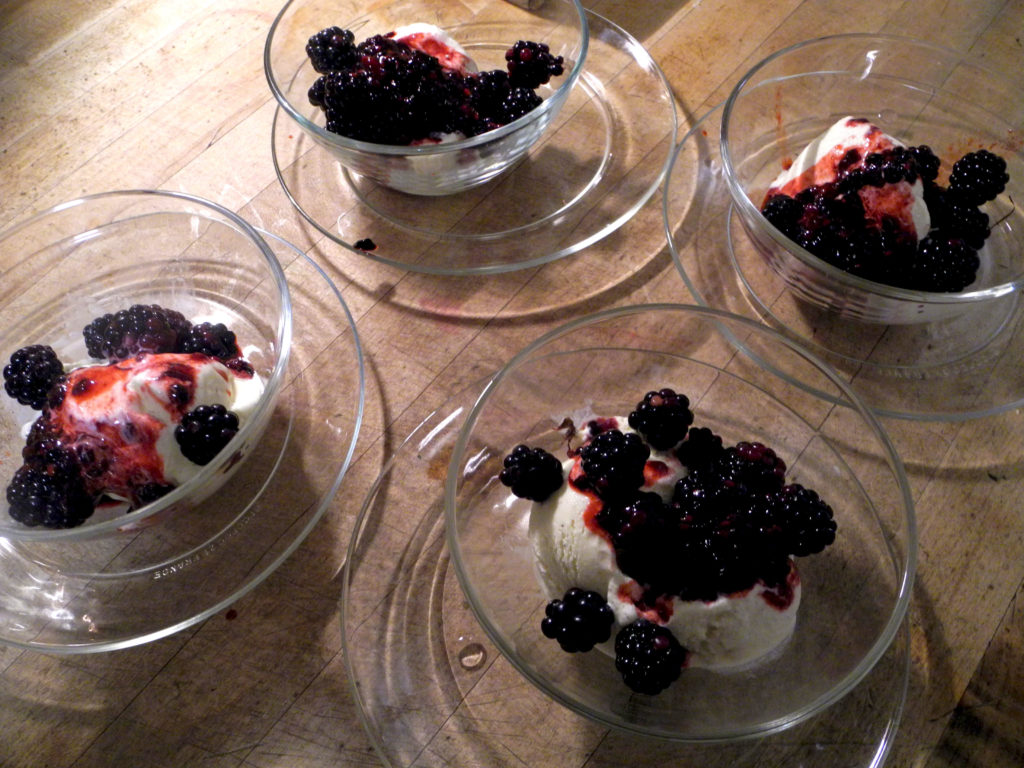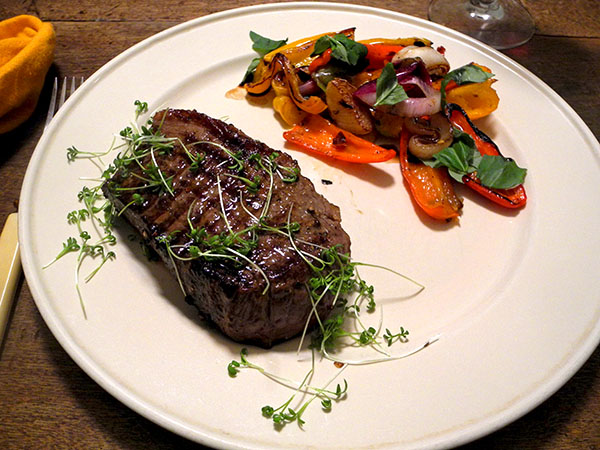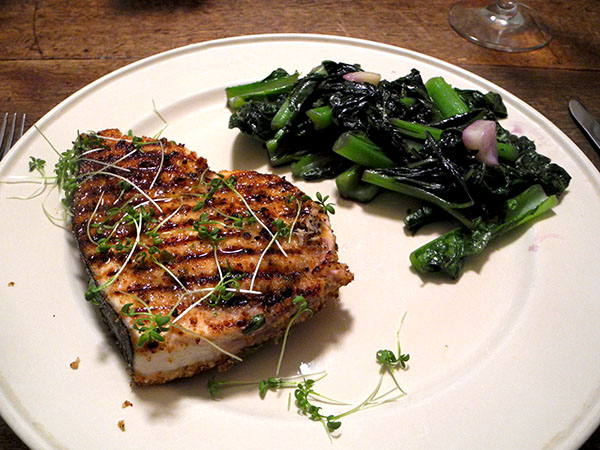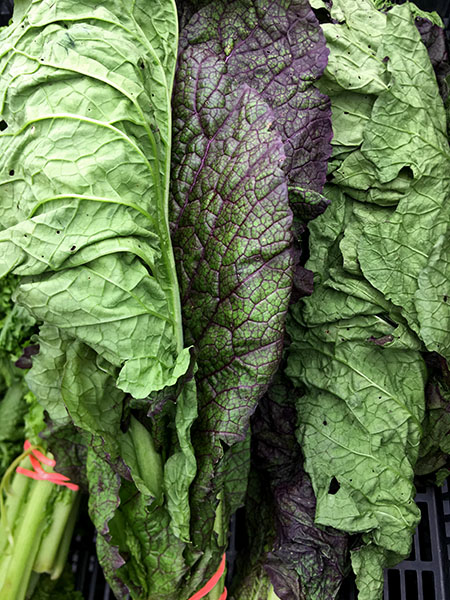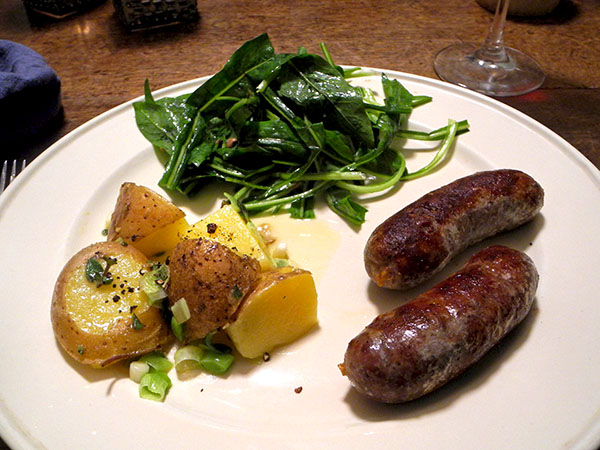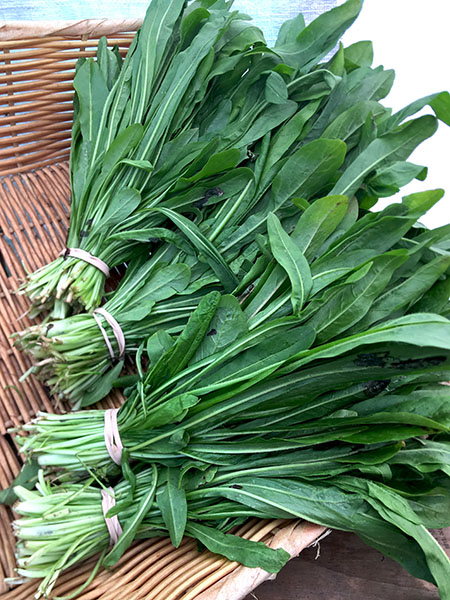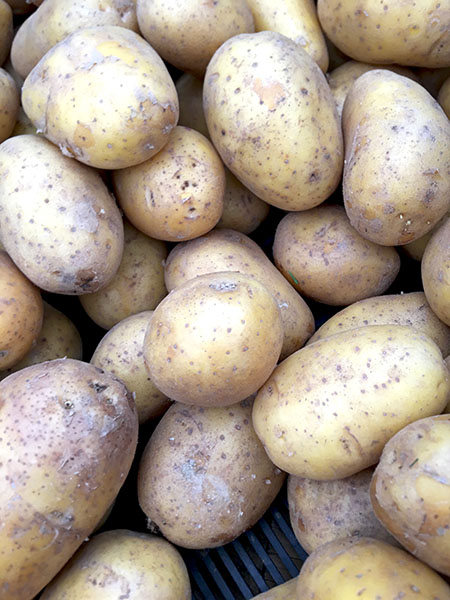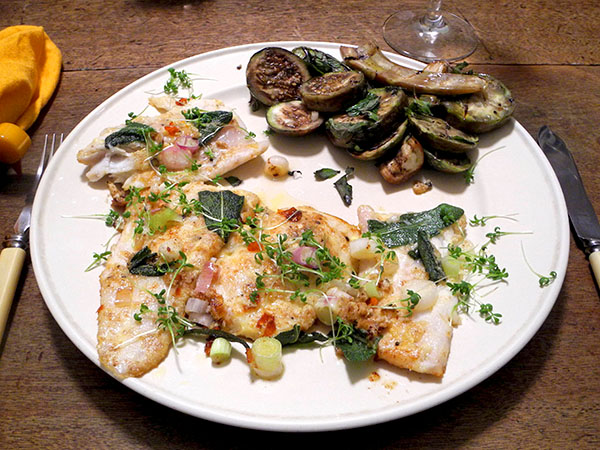
I think I sometimes take flounder too much for granted. It’s easy to cook, and it’s something of a blank slate; It’s lean and somewhat flaky, with a firm texture; it has a mild sweetness, and it can be cooked with the lightest of sauces.
But this time I had to bow my hat to Paralichthys dentatus (or maybe to pseudopleuronectes americanus, since I wasn’t told whether I was buying Summer Founder or Winter Flounder, and I didn’t think to ask Jan while I was at the fish stand): I managed to take home 2 splendid, very fresh fillets yesterday (one, slightly thicker than the other, from the top of the fish, and one from the bottom), and I totally lucked out with the combination of ingredients I found to enhance it.
I’ve read that if you really wanted to appreciate a very fresh white fish, you should try poaching it and serving it with only a bit of salt. I don’t have that restraint, and besides, I have access to so many fresh herbs and seasonings that deserve some appreciation as well.
I’m going to want to revisit this very specific dish again, probably as often as I find I have all of the elements that went into it. It was superb.
The allium was a particularly sweet Japanese scallion.
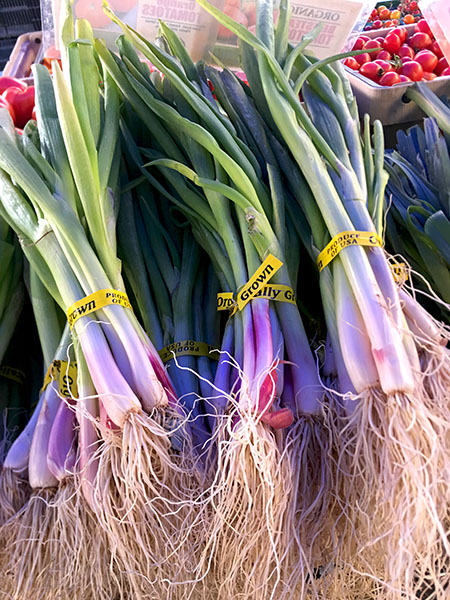
- two flounder fillets, altogether one pound, from P.E. & D.D. Seafood, each divided lengthwise along the line of the spine and then cut crosswise once, making 8 pieces in all, seasoned with salt and pepper on both sides, coated lightly with local North Country Farms Stone Ground Whole Wheat Flour purchased in the Union Square Greenmarket, then submerged in a shallow bowl containing a lightly-whipped mixture of one egg from Millport Dairy, a fourth of a cup of whole milk from Millport Dairy Farm, and a pinch of salt, then allowed to stay in the bowl until the accompanying vegetable had been prepared (it was to be served room temperature) and the remaining ingredients for preparing the fish set out, removed from the bowl at that time, placed in a heavy enameled cast iron pan on top of 3 tablespoons of melted butter, several halved large fresh sage leaves from Phillips Farm, one section of a dried, crushed orange/golden dried habanada pepper from Norwich Meadows Farm, and 3 sliced Japanese scallions from Norwich Meadows Farm, sautéed over a brisk flame until golden, about 2 1/2 minutes on the first side, 1 1/2 minutes on the second, sprinkled with juice of an organic lemon from Whole Foods Market, transferred onto warm plates, some micro lemon peppercress from Two Guys from Woodbridge scattered over the top
The vegetable was assembled from two sources (I didn’t have enough left in the refrigerator for a meal, so I bought a few more that day).
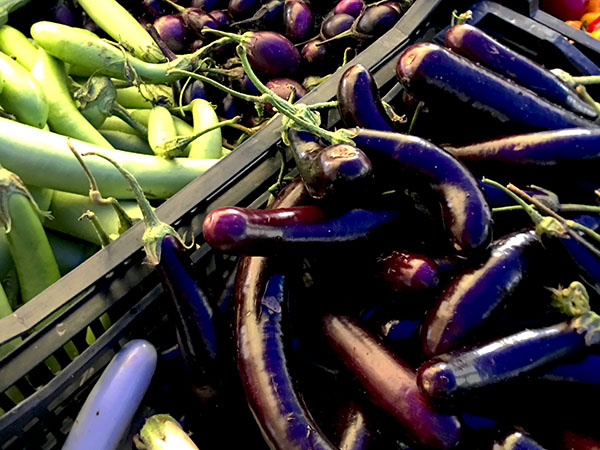

- several different kinds and colors of baby eggplant, some from Norwich Meadows Farm, the others from Alewife Farm, all cut into quarter-inch to half-inch slices, mixed with a little olive oil, finely-chopped Rocambole garlic from Keith’s Farm, sea salt, and freshly-ground black pepper, pan-grilled uncrowded on a 2-burner cast iron plate over a brisk flame, turning once, arranged on an oval platter, sprinkled with torn basil leaves from Stokes Farm, drizzled with a bit of olive oil, arranged on the plates just before the fish had been finished
The dessert was the simplest – and sometimes the most perfect – ending to a meal, a bowl of local grapes that had just been washed in icy-cold water.
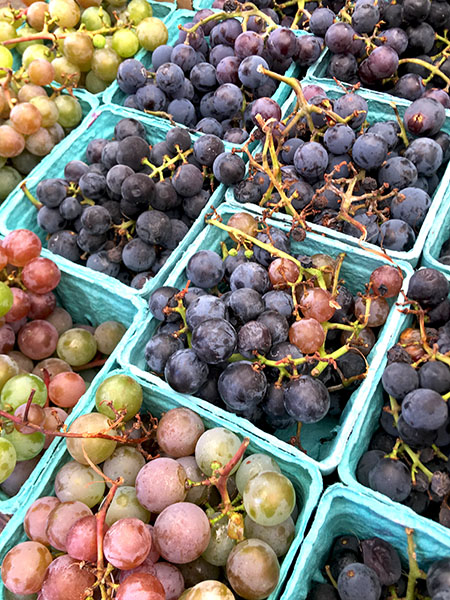
- ‘Interlaken’ seedless green grapes from Locust Grove Orchards [the lighter-colored grapes on the left in the image above]
- the wine was a California (Clarksburg) white, Richard Bruno Clarksburg Chenin Blanc 2016, from Naked Wines
- the music was the entire album, ‘Mendelssohn: Violin Concerto, Symphony No.5, Hebrides Overture‘, in absolutely terrific performances by Pablo Heras-Casado conducting the Freiburger Barockorchester, Isabelle Faust the soloist in the concerto


